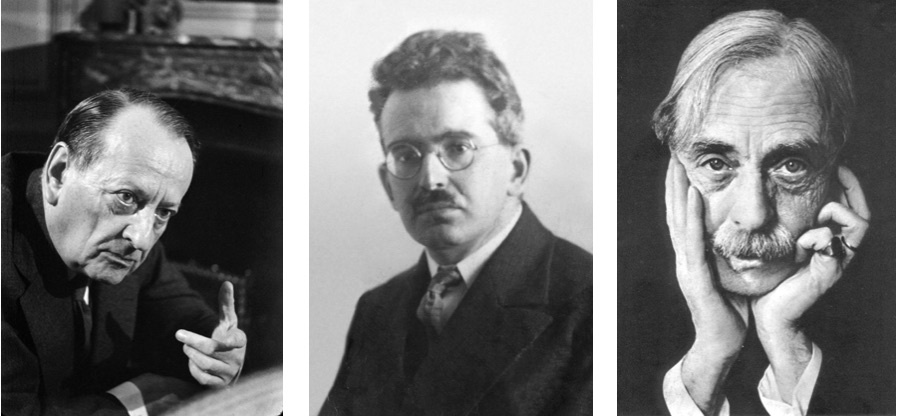
L’avvento della riproducibilità tecnica e la sua diffusione mediante la fotografia segnano per la prima volta la possibilità di emancipare l’arte rispetto all’ambito del rituale: venendo meno i valori dell’unicità e dell’autenticità, si apre la possibilità di conferire all’arte una nuova valenza politica, al valore cultuale dell’opera si sostituisce progressivamente il valore espositivo.
Walter Benjamin
The advent of technical reproduction and its spread through photography mark for the first time the possibility of emancipating art with respect to the field of ritual: limiting the values of uniqueness and authenticity opens the possibility of giving art a new political significance, the work’s cultural value is progressively replaced by the exhibition value.
Walter Benjamin
Nessuna riproduzione, per quanto tecnicamente perfetta, può essere più avvincente e toccante dell’opera originale. Tuttavia, la riproduzione fotografica delle opere d’arte ha consentito a decine di milioni di persone di conoscere e apprezzare i capolavori dei grandi artisti di tutti i tempi, invogliandoli, al tempo stesso, a visitare i luoghi che li ospitano per poterli ammirare nello splendore della loro autenticità.
(André Malraux)
“No reproduction, however technically perfect, can be more gripping and touching than the original work. However, the photographic reproduction of works of art has allowed tens of millions of people to know and appreciate the masterpieces by great artists of all times, at the same time urging them to visit the places hosting them so they can admire them in the splendour of their authenticity”.
André Malraux
Il progetto de Le mostre impossibili prende spunto da un’istanza di democrazia culturale che ha in Paul Valéry, Walter Benjamin e André Malraux i suoi precursori.
Il progetto nasce anche dalla consapevolezza che, nell’epoca della riproducibilità digitale dell’opera d’arte, i concetti di tutela e valorizzazione (culturale ed economica) del patrimonio artistico investono inevitabilmente non solo l’opera in quanto tale, ma anche la sua riproduzione: “La storia dell’arte, da cent’anni a questa parte, non appena sfugge agli specialisti, è storia di quanto è fotografabile”[1].
La dispersione delle opere d’arte di uno stesso autore in svariati musei, chiese e collezioni private di diversi continenti rende pressoché impossibile allestire delle mostre monografiche che diano una significativa visione d’insieme dell’opera complessiva dei grandi artisti del passato. Ad esempio, la più imponente mostra del Caravaggio di tutti i tempi, curata da Roberto Longhi a Milano nel 1951, comprendeva non più di trentacinque dipinti sugli oltre sessanta storicamente attribuiti all’artista; ed erano soltanto venticinque quelli esposti nella grande mostra realizzata presso le Scuderie del Quirinale a Roma, nel 2009, in occasione del 400° anniversario della sua morte.
La realizzazione di grandi mostre è resa ancora più problematica dalla crescente - peraltro comprensibile - contrarietà dei direttori dei musei a concedere il prestito delle opere ma anche dagli esorbitanti costi delle assicurazioni e delle speciali misure di sicurezza, inevitabili per dipinti d’incalcolabile valore. Le Mostre Impossibili nascono da queste premesse.
1 André Malraux, Les voix du silence, Paris, Gallimard, 1951. Tr. it. Il museo deimusei. Le voci del silenzio, Milano, Mondadori, 1957.
The Impossible Exhibitions project was inspired by an example of cultural democracy whose forerunners are Paul Valéry, Walter Benjamin and André Malreaux.
The project also comes from the awareness that, in the époque when a work of art may be digitally reproduced, the concepts of artistic heritage's (cultural and economic) safeguarding and development inevitably enter the work as such but also its reproduction: 'For a hundred years here, as soon as the history of art has escaped specialists, it has been history to the extent it can be photographed.' [1]
When one artist's work is spread over various museums, churches and private collections in different continents, it becomes almost impossible to mount monograph exhibitions that give a significant overall vision of the great past artist's work. For example, the most imposing Caravaggio exhibition ever, curated by Roberto Longhi in Milan in 1951, included no more than 35 paintings from over 60 historically attributed to him; and the great exhibition held by Scuderie del Quirinale in Rome in 2010, on the occasion of the 400th anniversary of his death, had just 25.
It is even harder to create great exhibitions due to the museum directors' growing – though understandable – unwillingness to lend the works out, as well as the exorbitant costs of insurance and special security measures, which are inevitable for works of incalculable value. The Impossible Exhibitions derive from these premises.
[1] André Malraux, Les voix du silence, Paris, Gallimard, 1951. Tr. it. Il museo dei musei. Le voci del silenzio, Milano, Mondadori, 1957.